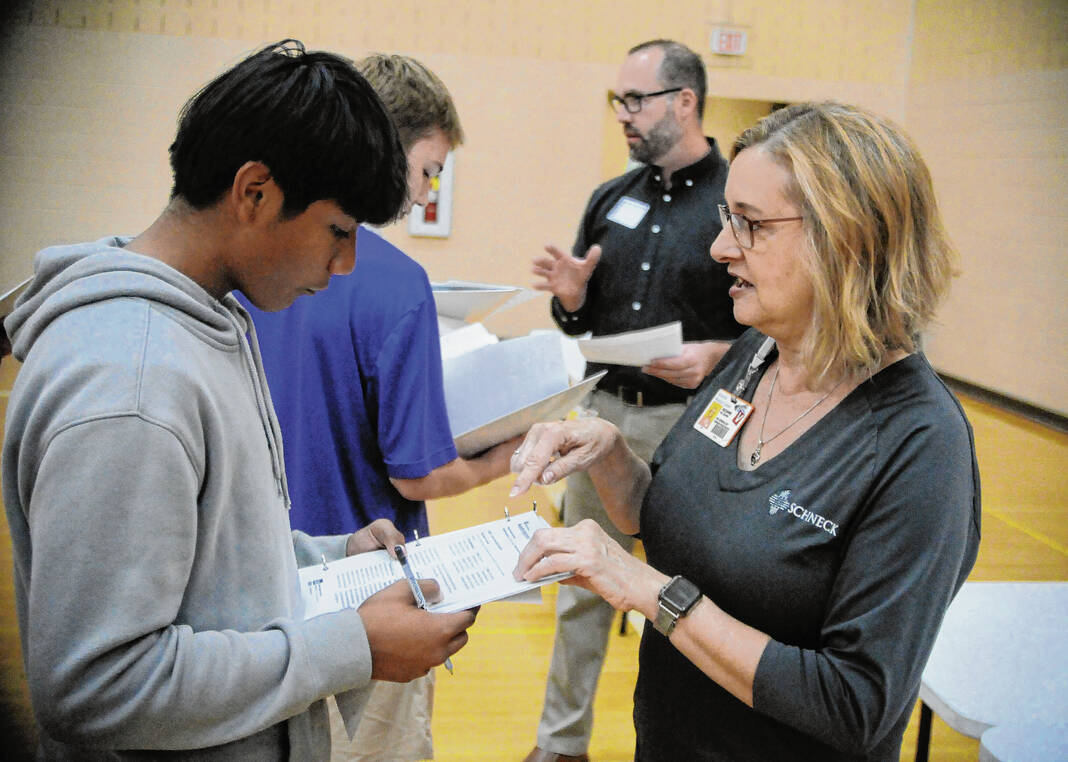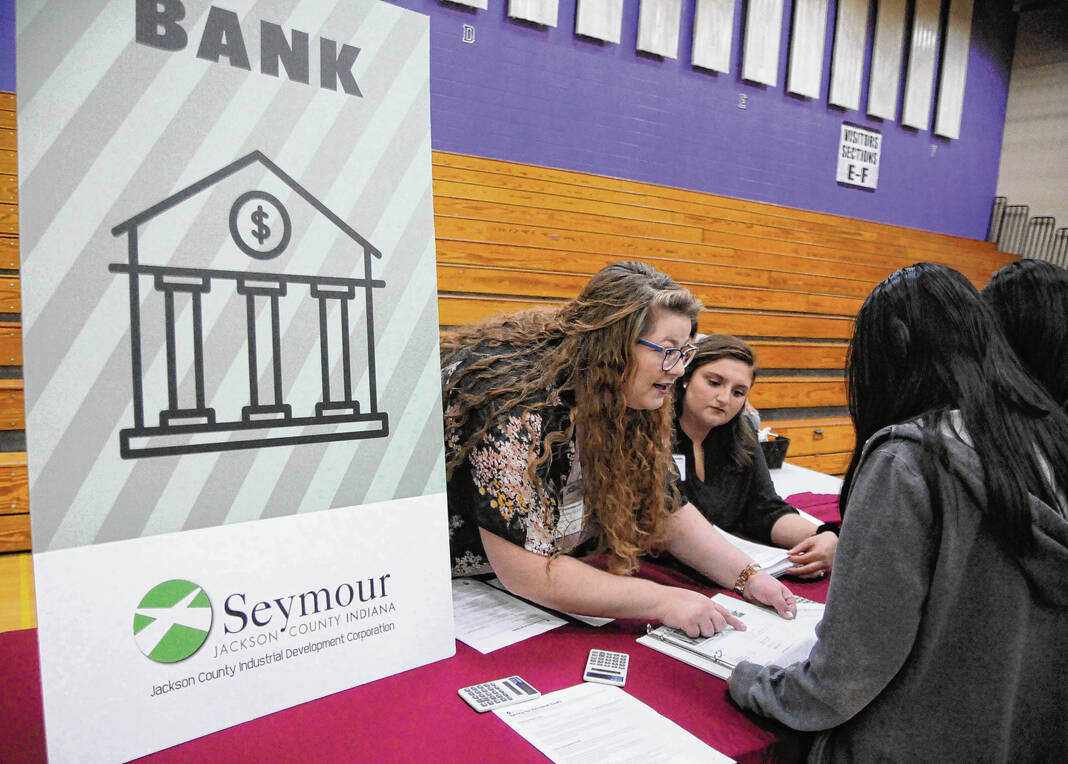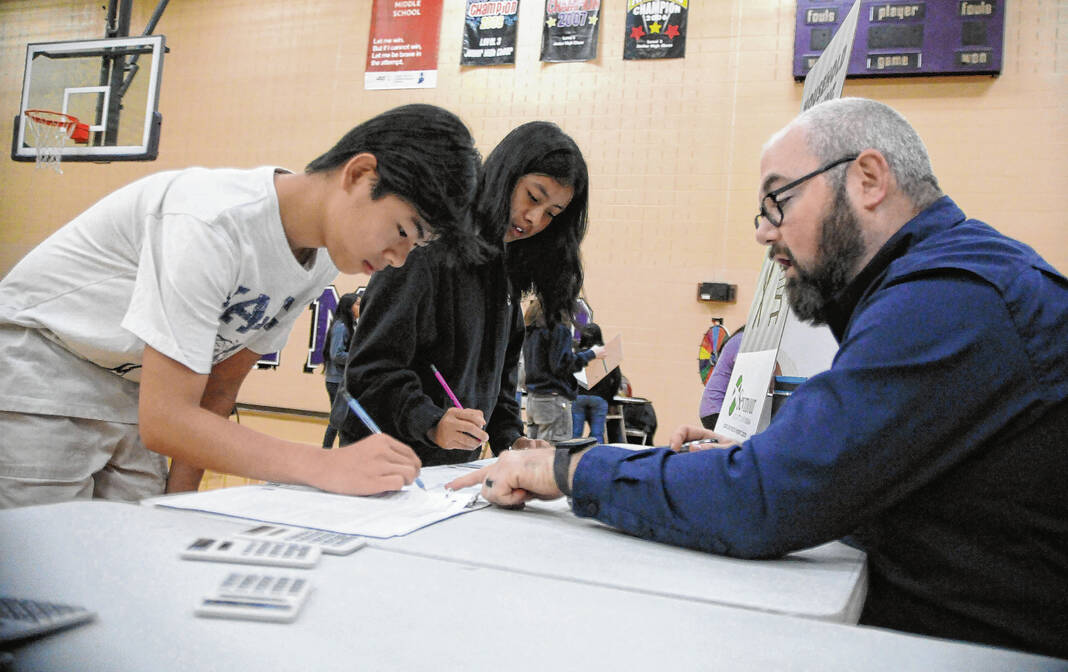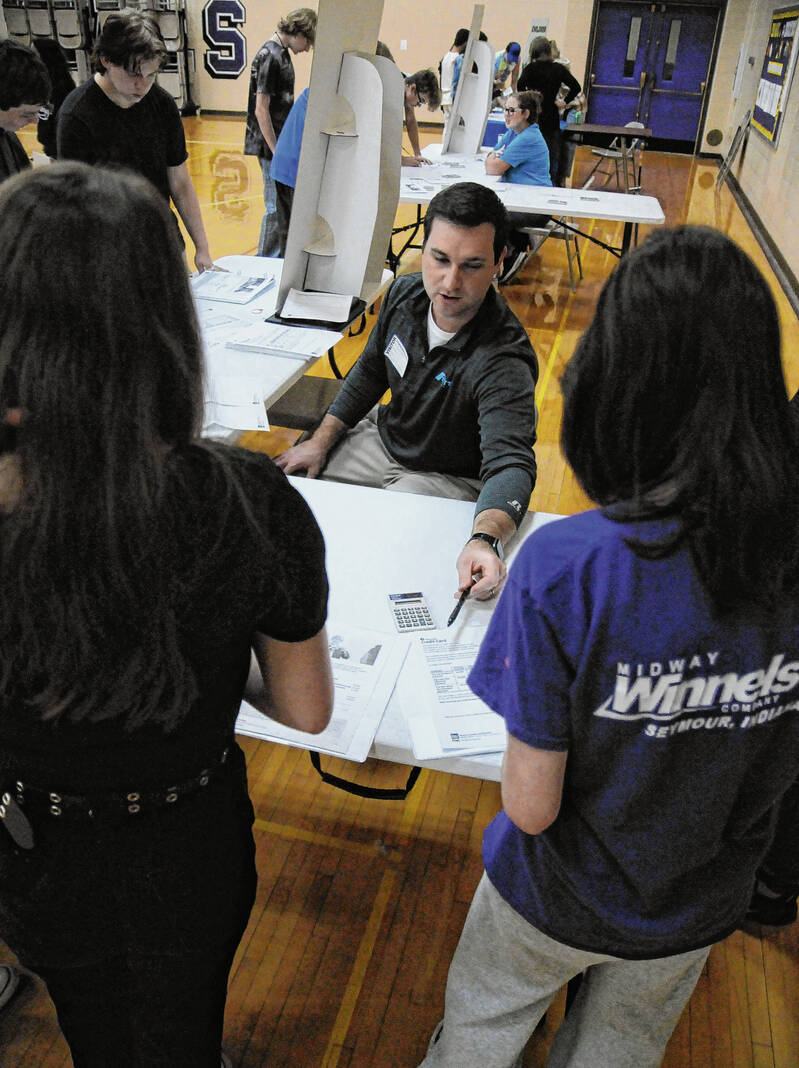Diego Guzman received a dose of reality during a recent event at Seymour Middle School.
He was among the eighth-graders who entered one of the gymnasiums at the school, picked up a binder and a pencil, read the paperwork inside to figure out what type of job they represented and went from table to table.
Those tables were titled transportation, phone, bank, household spending, sharing and charitable giving, the unexpected, health care, housing Part 1, housing Part 2, credit card, pets and children.
There was a volunteer or two at each table to read about their situation and figure out what they needed to move on to another table.
Guzman, 14, was a retail salesperson with two children, and he visited the credit card table first and then the children and transportation tables.
Reading his papers, he learned he already had paid off his credit card, so he was off to a good start. Since he had excellent credit, he chose the cheapest option for a vehicle.
“I’ve already paid off all my credit card, and I’m getting a car that will just get me from Point A to Point B. You don’t need some fancy car,” Guzman said. “I’m thinking I might not get a pet because I have two children. That’s probably $1,000 a month.”
Attending Jackson County Industrial Development Corp.’s Reality Fair on Oct. 13 at SMS, Guzman said it was beneficial to get a reality check at his age.
“I think it’s going to help me moving forward because my parents are already thinking ‘Get a car that just gets you around from Point A to Point B’ because we already have a lot of cars,” he said. “This can also help people a lot because it might teach you about credit, debt and everything that can happen during your age.”
He said some 16-year-olds get a job and/or their driver’s license, so they need to learn what they can afford. By 18, they may start paying taxes, he said.
“They are trying to teach us how to be ready for high school,” Guzman said of another benefit of the Reality Fair.
Jackie Hill, workforce director for JCIDC, said the organization has offered programs like Real World Seymour Career Day in the past, where businesses are brought in to talk to students.
That was nixed due to the COVID-19 pandemic, and nothing was done at the middle school last year.
Bringing Mandy Rohdert on board as workforce partnership coordinator, she found the program used for the Reality Fair and used a grant from Walmart to buy all of the startup materials.
“This is a pilot this year with Seymour Middle School, but we’d like to be able to do it, offer it to all of the county schools,” Hill said, noting events could be held for multiple schools at SMS and Brownstown Central Middle School.
Rohdert said the Reality Fair is a good introduction for young people to experience making financial decisions and managing money.
“I hope it’s just a baby step into learning about budgeting,” she said.
Why eighth-graders?
“I think they are just old enough to start understanding a little bit about money,” Rohdert said. “They might be getting jobs in the next few years, and then it would probably be a great thing to revisit again, like their junior year, when they have been exposed to it a second time and they can learn maybe a little more in-depth about what it’s like to have a budget.”
Seymour High School Jobs for America’s Graduates Specialist Celeste Bowman and a few of her students, including those who are bilingual, helped with the event.
Rohdert said she appreciated that and also the volunteers who worked at the tables in both gyms.
“I had to recruit a ton of volunteers, but I feel like the people of Jackson County always show up for our kids,” she said. “It’s something that has surprised me pleasantly moving back here. They are always willing. They always say yes.”
Peggy Hood and Gary Meyer were among the volunteers. They worked at the sharing and charitable giving table in one of the gyms.
“It exposes them to income, expenses and what’s left over,” Meyer said of the Reality Fair. “It’s good exposure for them. They understand income a little bit, but expenses, I don’t think most are exposed to it. I think most of them understand what charity is. Most of them understand you should contribute to that.”
Hood said it was enlightening to see what students understood and what was new to them.
“We’ve had some students, they are like, ‘Oh,’ and we’ve had some students that really understand. They went, ‘Oh, I’ve got this much left,’” she said. “We’ve had both ends of the spectrum.”








